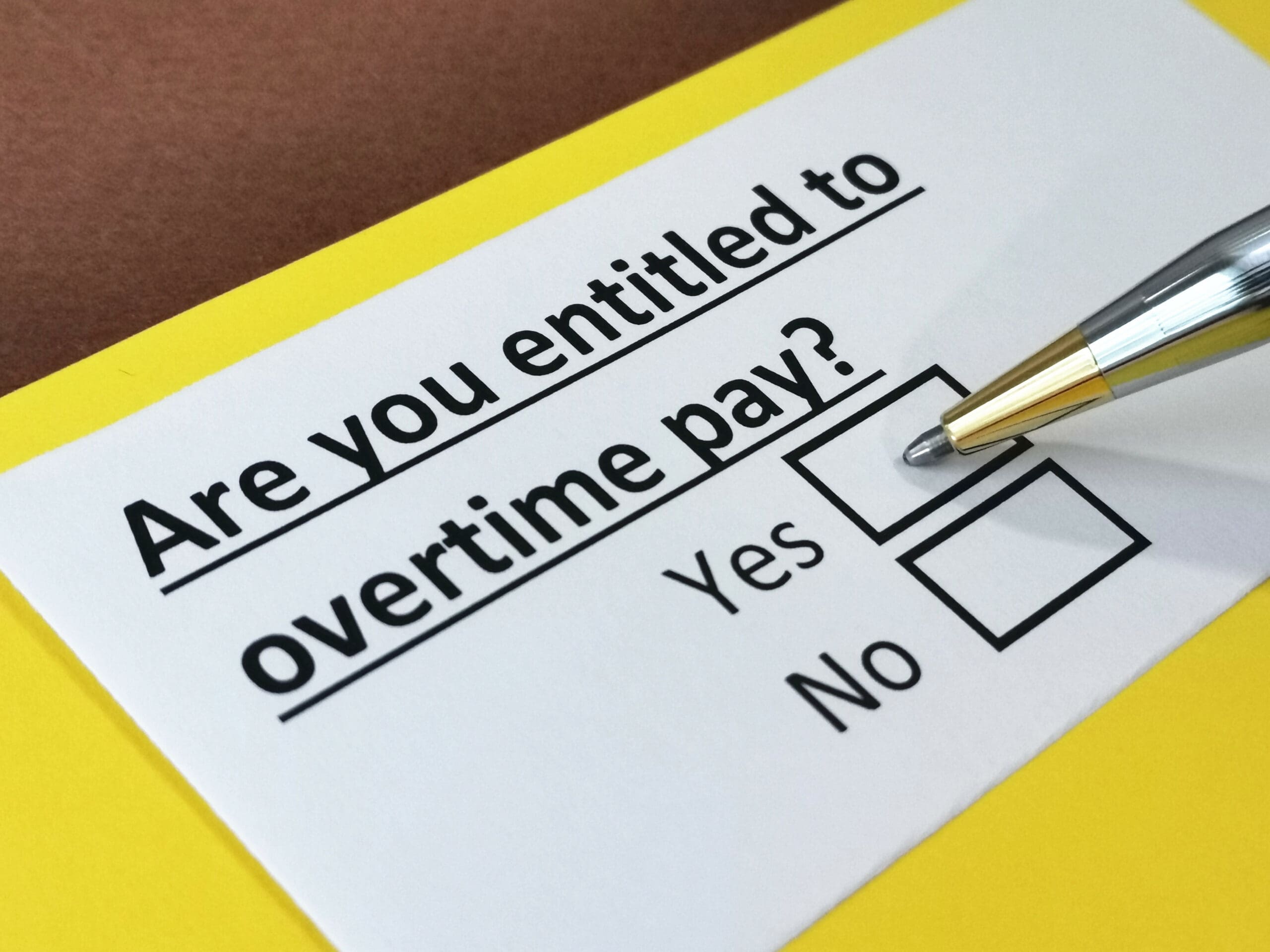
August 30, 2023
Understanding the Latest Overtime Laws and Proposed Regulations: What You Need to Know
Introduction
On August 30, 2023, the Department of Labor announced a Notice of Proposed Rulemaking (NPRM) concerning the Fair Labor Standards Act (FLSA). Titled “Defining and Delimiting the Exemptions for Executive, Administrative, Professional, Outside Sales, and Computer Employees,” the NPRM aims to update and revise the regulations that exempt specific categories of employees from minimum wage and overtime pay requirements. This post seeks to dissect the proposed revisions and explain their significance in terms of overtime laws and possible overtime law lawsuits.
The Fair Labor Standards Act (FLSA)
Before diving into the proposed changes, it is important to provide context. The Fair Labor Standards Act (FLSA), enacted in 1938, serves as a cornerstone in labor law, setting the legal standards for minimum wage, overtime pay, recordkeeping, and child labor in both the private and public sectors that are involved in interstate commerce. As per the Act’s mandate, employers must remunerate their employees with a minimum wage and provide overtime pay for work exceeding 40 hours a week. However, exemptions exist, primarily focusing on “white-collar” jobs falling under Executive, Administrative, or Professional (EAP) categories.
The Current Exemption Categories
At present, Section 13(a)(1) of the FLSA exempts executive, administrative, and professional employees from minimum wage and overtime laws, provided they meet specific salary and duties tests. Additional exemptions exist for outside sales and computer employees.
Proposed Changes: An Overview
The NPRM focuses on three main areas:
- Increasing the Standard Salary Level: The proposed standard salary level would increase to $1,059 per week or $55,068 annually for a full-year worker, aligned with the 35th percentile of weekly earnings of full-time salaried workers in the lowest-wage Census Region, currently the South.
- Updating the Highly Compensated Employee Threshold: The proposal suggests raising this threshold to $143,988 annually, which corresponds to the annualized weekly earnings of the 85th percentile of full-time salaried workers nationally.
- Automatic Updating Mechanism: The Department also proposes an automatic updating mechanism to keep the earnings thresholds current without requiring new rulemaking.
Significance of the Proposed Salary Level Increase
The proposed salary level increases aim to reflect changes in income and cost of living, ensuring that employees receive adequate compensation. Raising the salary threshold for the exemptions essentially means that fewer employees will fall under these exemptions, thereby increasing the number of workers eligible for minimum wage and overtime pay. This could have significant implications for employers and could potentially open avenues for overtime law lawsuits if organizations fail to comply.
The Highly Compensated Employee Adjustment
By increasing the total annual compensation threshold for highly compensated employees, the Department intends to better align the regulations with current pay practices. This is a critical step to ensure that highly compensated employees who perform non-exempt duties are eligible for overtime and minimum wage protections.
The Automatic Updating Mechanism
One of the most important aspects of the NPRM is the proposed automatic updating mechanism. This would allow the Department to update all earning thresholds to reflect current data, improving the law’s efficiency and effectiveness. Previously, such updates required a formal rulemaking process, which often resulted in outdated thresholds.
Implications for Overtime Law Lawsuits
The Department estimates that 3.4 million currently exempt employees earning between the current and proposed standard salary levels would gain overtime protection if the proposal is accepted. Additionally, approximately 248,900 employees currently exempt under the HCE test would be affected by the proposed increase in the HCE total annual compensation threshold. Failure to adapt to these changes could result in legal ramifications for employers, including overtime law lawsuits. Employers would be wise to reassess their current employment contracts, payment structures, and employee classifications to ensure they align with these proposed changes.
Conclusion
The proposed updates by the Department of Labor intend to modernize the regulations issued under the FLSA to better reflect the economic landscape. The changes aim to ensure that more workers are eligible for overtime pay and minimum wage protections. Employers must stay abreast of these potential changes to comply with the law and avoid the risks associated with overtime law lawsuits. The proposal is still under review, and interested parties can contribute their insights and comments during the rulemaking process.
While it remains to be seen whether the NPRM will be enacted in its current form, its announcement already calls for proactive planning from both employees and employers. As laws and regulations continually evolve, staying informed is the first step toward ensuring fairness and legality in employment practices.
Remember, if you believe your employer is violating the FLSA or retaliating against you for asserting your rights, it is important to seek legal advice and report the issue to the appropriate authorities. By doing so, you contribute to upholding fair labor practices and maintaining a work environment that respects and protects employee rights.